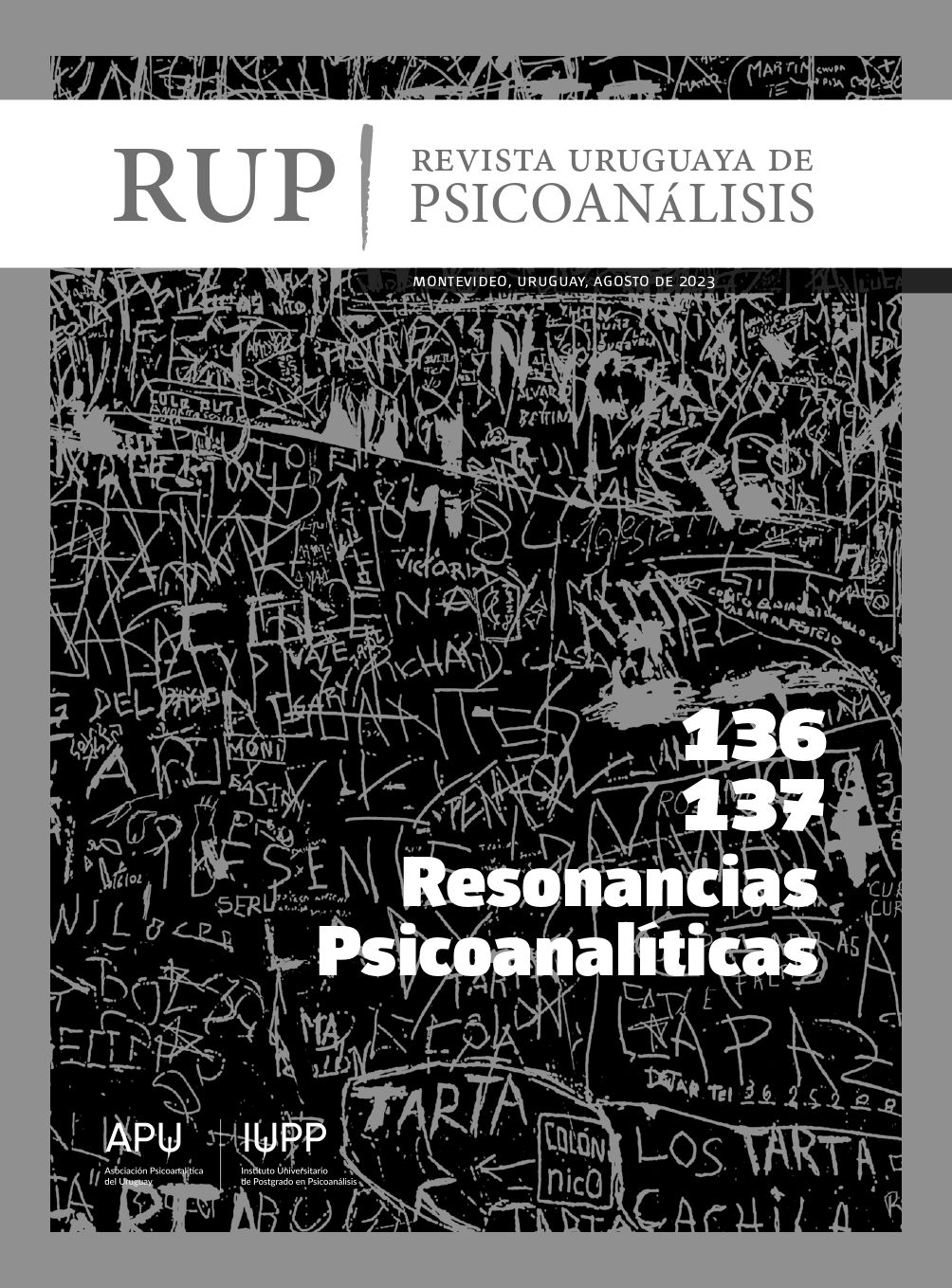Fair interpretation
DOI:
https://doi.org/10.36496//n136-137.a11Keywords:
Interpretation, Psychoanalytic field, Countertransference, Technique psychoanalytic, Timming, Transference, Reverie, Clinical materialAbstract
The author attempts to explore the complexities of the transferential-countertransferential work where the risk of excess in the
interpretation is the mainstay of the analysis. Relating it to the clinic, she takes some examples to show the impossibility of restraining these interpretations with excessive edges, in response to the excess of experiences intensely lived by the patient at the same time, and generally without words. It will be through the analysis, in the times when the analyst can offer an interpretation that aims at the reintrojection of the metabolized contents in the mind of the analyst, that these can be transformed into thinkable elements that contribute to the understanding of what is going on in the mind of the patient, the analyst and the duo.
Downloads
References
Baranger, W. (1994). Proceso en espiral y campo dinámico. En W. Baranger, R. Zac de Goldstein y N. Goldstein, Artesanías psicoanalíticas (pp. 349-370). Kargieman. (Trabajo original publicado en 1979).
Bion, D. W. (2003). Aprendiendo de la experiencia. Paidós. (Trabajo original publicado en 1962).
Brun, A. (2019). Clínica de las situaciones límite: Odios pasionales y transferencia. Trabajo presentado en reunión Científica de la Asociación Psicoanalítica del Uruguay.
Castoriadis Aulagnier, P. (1975a). La entrada en escena de la imagen de palabra y las modificaciones que ella impone a la actividad
de lo primario. En P. Castoriadis Aulagnier, La violencia de la interpretación: Del pictograma al enunciado. Amorrortu.
Castoriadis Aulagnier, P. (1975b). La violencia de la interpretación: Riesgo de exceso. En P. Castoriadis Aulagnier, La violencia de la interpretación: Del pictograma al enunciado.Amorrortu.
Freud, S. (1992). Lo inconsciente. En J. L. Etcheverry(trad.), Obras completas (vol. 14, pp. 153-214).Amorrortu. (Trabajo original publicado en 1915).
Green, A. (2001). El tiempo fragmentado. Amorrortu. (Trabajo original publicado en 2000).
Marucco, N. C. (1999). Recordar, repetir reelaborar:Un desafío para el psicoanálisis actual. En N. C. Marucco, Cura analítica y transferencia.Amorrortu.
Nemas, C. (2012). Angustia y dolor mental: Algunas reflexiones. Inédito.
Rebella, G. (2007). Repetición desde el desamparo. Revista Uruguaya de Psicoanálisis, 105, 213-232.
Rebella, G. (2020). El exceso de/en la interpretación. En 33° Congreso Latinoamericano de Psicoanálisis: Fronteras. Viento de Fondo. http://fepal2020.programacientifico.info/opc/libro/FEPAL2020_Libro_Virtual_FRONTERAS.pdf
Sedlak, V. (2005). El material del paciente como ayuda para la elaboración rigurosa de la contratransferencia y la supervisión. Libro Anual de Psicoanálisis, 19.
Vallespir, N. (2000). La (im)posible neutralidad de un psicoanalista posible. En La muerte y otros comienzos. Trilce.
Winnicott, D. W. (1972). Papel de espejo de la madre y la familia en el desarrollo del yo. En D. W. Winnicott, Realidad y juego. Gedisa. (Trabajo original publicado en 1967).
Winnicott, D. W. (1979). La agresión en relación con el desarrollo emocional. En D. W. Winnicott, Escritos de pediatría y psicoanálisis.
Laia. (Trabajo original publicado en 1950-1955).
Downloads
Published
Issue
Section
License
Copyright (c) 2023 Revista Uruguaya de Psicoanálisis

This work is licensed under a Creative Commons Attribution 4.0 International License.


 This work is licensed under a
This work is licensed under a 